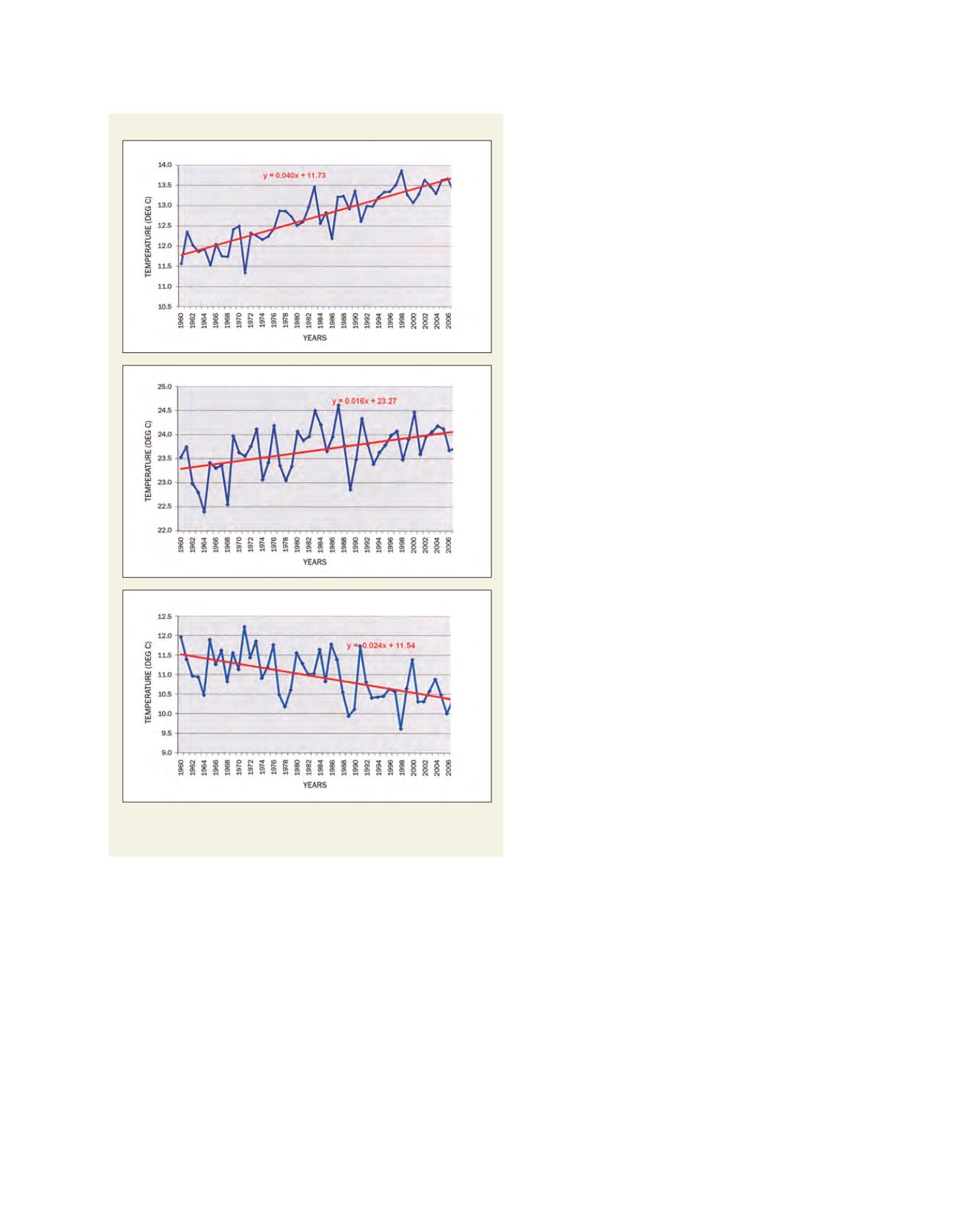

[
] 236
A
dAptAtion
And
M
itigAtion
S
trAtegieS
ages and the loss of recreational areas such as beaches
through siltation, erosion or submergence
• Reduction of the buffer effect provided by coral reefs and
mangrove systems, which has increased the potential for
erosion.
Adaptation strategies in Kenya
In Kenya, a number of adaptation measures relating to
climate information services are currently in place or
planned. Some of the planned activities are designated
‘flagship projects’ in the First Medium-term Plan, which
covers the period 2008 to 2012 under the Kenya Vision
2030 programme.
3
Kenya Vision 2030 has identified three pillars crucial to
transforming the country into a modern, globally competi-
tive, middle income nation by the year 2030. The pillars
are: economic, social and political. Six sectors – including
agriculture and livestock – have been targeted under the
economic pillar to raise the national gross domestic product
growth rate to 10 per cent by the year 2012. Sectors such
as environment, water and sanitation have been identified
to drive the social pillar. Priority programmes and projects
have been identified to drive the whole process –some have
already been initiated, while others are in the pipeline.
An example of a current project is the government’s
efforts in the area of livestock farming. This type of farming
is mainly carried out in the semi-arid lands of Kenya where
climate variability is high and climate extremes are quite
prevalent. The government has recently invested resources
to rehabilitate the Kenya Meat Commission and procure
livestock from farmers in cases of prolonged drought. This
is a strategy designed to minimize the economic losses that
farmers experience when livestock die due to lack of water
and pasture – a situation becoming increasing common in
the country.
Another example involves the Arid and Semi-Arid Lands
(ASALs) of the country, which are currently underutilized
for agricultural purposes. In order to utilize these areas and
enhance food productivity, the government has allocated
resources to irrigate 600,000 to 1,000,000 hectares in the
ASALs. This is based on estimates that intensified irriga-
tion can increase agricultural productivity fourfold and thus
resulting income.
The quality of land in the country is suffering a general
decline due to, among other factors, unsustainable farming
practices and human induced climate change. Forests play
a crucial role in protecting water catchment areas, conserva-
tion of biodiversity and provision of forest products in the
country. One current flagship project envisages full rehabili-
tation of the five water towers in Kenya. The forest policy
is designed to promote sustainable management of the
forests to serve as water catchments, biodiversity conserva-
tion reservoirs, wildlife habitats and carbon sinks to reduce
carbon dioxide concentrations in the atmosphere.
Collaborative adaptation projects
The Western Kenya Community-Driven Development and
Flood Mitigation (WKCDD/FM) project is being imple-
mented through the Office of the President with funds
The glaciers on Mount Kenya have shown a drastic decline in the face
of climate change. This is a very worrying trend, as the highlands act as
the source for many of the major rivers in the country. In turn, these
rivers are involved in significant activities such as hydroelectric power
generation. Reduction of water levels in the dams on these rivers has seen
regular rationing of power for both domestic and industrial use.
Climate change also manifests itself through sea-level rise, which has
already led to the destruction of infrastructure along the coastal parts of
Kenya. This has occurred in various ways, including:
• Rise in saline groundwater levels, causing flooding of shallowwells and
boreholes, and contaminating them
• Inundation of coastal wetlands and lowlands has led to disruption of
coastal freshwater distribution systems. This has resulted inwater short-
Temperature trends for Dagoretti, Nairobi, Kenya
Trend in annual minimum temperature (top); annual maximum temperature
(middle); temperature range (bottom)
Source: Kenya Meteorological Department
















